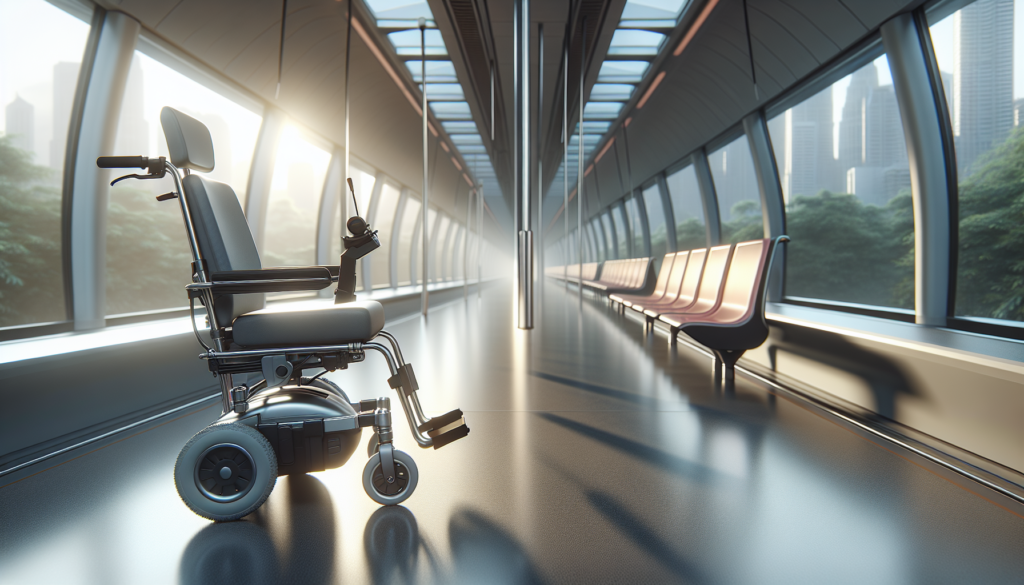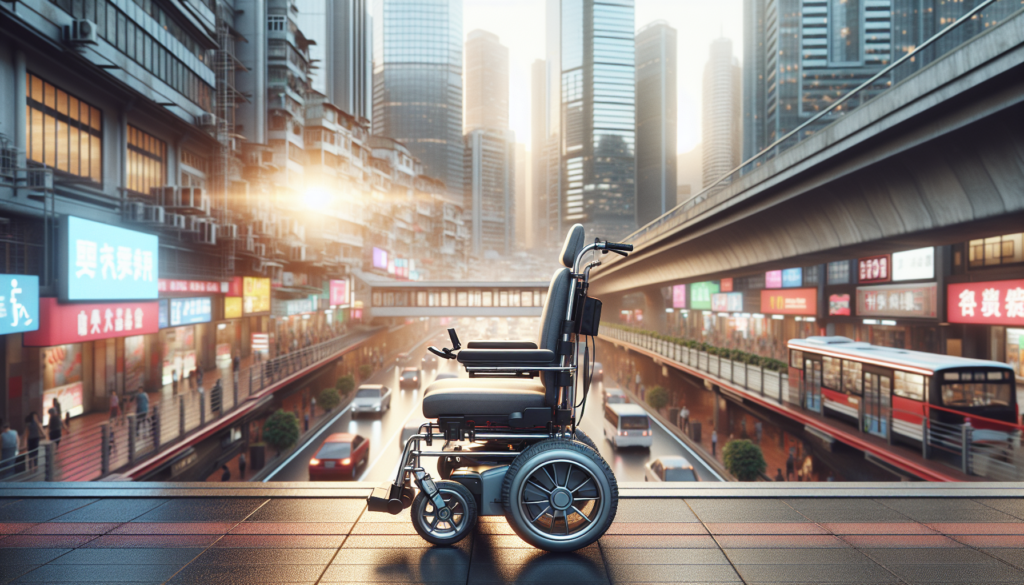
In the realm of electric wheelchairs, two popular battery types often come into play: lithium-ion and lead-acid. Each has its own set of advantages and disadvantages that can significantly affect the performance and usability of the electric wheelchair. Lithium-ion batteries, like those found in the Edegree EW6, boast a quicker charge time and lighter weight, making them an appealing option for those seeking efficiency and portability.
On the other hand, lead-acid batteries, as seen in the Edegree EW1, offer a longer charge range but typically come with a heavier design, which may influence a user’s choice. In this blog post, we’ll delve into the differences between these two battery types, helping you make an informed decision tailored to your specific mobility needs.
Understanding Electric Wheelchairs
Electric wheelchairs have revolutionized mobility for many, providing the independence and freedom that some users may have thought was lost. These advanced machines come equipped with various features that cater to diverse needs. One significant aspect to consider is the type of battery used in electric wheelchairs, primarily lithium-ion and lead-acid batteries. When evaluating the Edegree EW6 and EW1 models from EKO Life MY, users can see stark differences in performance and specifications driven by their battery types.
The Edegree EW6 utilizes a lithium battery, offering a range of 10-15 km per charge and a forward speed of up to 8 km/h, providing a more modern and efficient user experience compared to the EW1 with its lead-acid battery that achieves a limited range of 20 km and a maximum speed of 6 km/h. Lithium-ion batteries, like the one found in the Edegree EW6, are generally lighter and more efficient, allowing for longer usage times and shorter charging durations, whereas the lead-acid option in the EW1, despite providing a good range, tends to be bulkier and heavier, weighing in at 38 kg compared to the EW6’s 14.8 kg.
Additionally, the lithium battery typically has a faster charging time, taking 6-8 hours versus the EW1’s 6 hours, making the EW6 more appealing for users requiring quick and efficient mobility solutions. Understanding these differences is crucial for potential buyers looking to invest in an electric wheelchair that suits their lifestyle and mobility needs.
Battery Types Explained
When it comes to electric wheelchairs, choosing the right battery type significantly impacts performance, weight, and overall user experience. Lithium-ion batteries, such as those used in the Edegree EW6, offer a compact design and lighter weight. Weighing only 14.8kg with its battery, the EW6 boasts an impressive range of 10-15 km per charge and a faster charging time of 6 to 8 hours.
Its lithium battery ensures reliable, sustained performance with a capacity of 24V 10AH, making it an appealing choice for those seeking mobility without the heft of traditional options. This type of battery also supports modes designed for diverse terrains with a climbing ability of less than 10° and a forward speed of up to 8 km/h, ensuring fluid navigation in various environments.
On the other hand, lead-acid batteries, like those in the Edegree EW1, provide a more economical but bulkier alternative. The EW1, which weighs 38 kg, features a similar 24V 10AH battery size, but its performance lags behind with a reduced range of 20 km per charge and a maximum speed of 6 km/h. Although they serve well for flat terrains with a climbing ability of 13°, the lead-acid battery’s heavier weight and longer charging time of 6 hours could limit mobility for some users. While it may be more affordable at RM 2,499, weighing the pros and cons will help users determine which battery type suits their lifestyle best.
Performance Comparison: Lithium vs Lead-Acid
When it comes to electric wheelchairs, the type of battery can significantly impact performance, range, and user experience. Lithium-ion batteries, as seen in the Edegree EW6 model, offer a superior range of 10-15 km per charge and faster charging times of 6-8 hours. Weighing only 14.8 kg, this model is also lighter compared to similar wheelchairs with lead-acid batteries.
The EW6 features a dual motor system with a 24V 190W brushless motor, providing a forward and reverse speed of up to 8 km/h. Its climbing ability of under 10° degrees makes it a suitable option for everyday urban mobility, especially for users who require flexibility and efficiency.
On the other hand, lead-acid batteries, like the one found in the Edegree EW1, provide a longer range of 20 km but come with a heavier weight of 38 kg. This model utilizes a dual motor 24V 250W setup but limits speeds to a maximum of 6 km/h. Charging takes about 6 hours, which is comparable to lithium-ion batteries, but it’s important to factor in weight and agility when choosing an electric wheelchair. While lead-acid batteries have their place in cost-effectiveness, lithium-ion is increasingly proving its worth in terms of performance and user satisfaction, making it a pivotal consideration for future mobility solutions.
Charging Times: Which Battery is More Efficient?

When it comes to charging times, electric wheelchairs equipped with lithium-ion batteries tend to offer a significant advantage over their lead-acid counterparts. For instance, the Edegree EW6, which features a lithium battery, has a charging time of 6 to 8 hours. This relatively quick turnaround means users can get back to enjoying their mobility without long interruptions. Meanwhile, the Edegree EW1, operating on a lead-acid battery, requires approximately 6 hours for a full charge. While both options offer similar charging durations, the efficiency of lithium-ion batteries can lead to faster overall performance, owing to their ability to sustain higher discharge rates without deteriorating quickly.
Moreover, the advantages of lithium-ion technology extend beyond just charging times. Lithium batteries can handle more charge cycles than lead-acid batteries, resulting in better longevity and reduced maintenance costs over time. This means that not only can electric wheelchairs with lithium batteries charge faster, but they also tend to last longer, providing a more reliable solution for those who depend on their wheelchairs for mobility. In the ever-evolving landscape of electric wheelchairs, considering what battery features align best with individual user needs can ultimately enhance the experience of mobility and independence.
Weight Considerations in Electric Wheelchairs
When choosing an electric wheelchair, weight is a crucial factor that influences portability and ease of use. The Edegree EW6, equipped with a lightweight lithium battery, weighs only 14.8 kg, making it an appealing option for users seeking convenience. Its manageable weight enables easy transport and maneuverability, especially for those who may need to lift or store their chair frequently. The lithium battery not only reduces the overall weight but also offers a range of 10-15 km per charge, thus enhancing the user’s mobility without the burden of heavy equipment.
Conversely, the Edegree EW1, which employs a lead-acid battery, weighs significantly more at 38 kg. Although this chair can support the same maximum load of 100 kg, its added weight may be cumbersome for users who travel often or require assistance in mobility. Moreover, while the EW1 has a respectable range of 20 km per charge, the heavier construction could be less favorable for daily use or long-distance outings. The difference in battery types also impacts the chairs’ charging times and overall maintenance requirements.
Therefore, for users prioritizing a lightweight design for ease of transport, the Edegree EW6 presents a significant advantage with its lithium battery when compared to its lead-acid counterpart, the EW1. The choice between these two electric wheelchairs fundamentally comes down to personal needs and preferences as related to weight considerations in daily use.
Climbing Ability and Speed: A Closer Look
When evaluating electric wheelchairs, climbing ability and speed are crucial factors that significantly influence user experience and mobility. The Edegree EW1, equipped with a dual motor 24V 250w system, showcases a commanding climbing ability of up to 13°, making it suitable for various terrains, while providing a forward and reverse speed of 0-6km/h. This performance is ideal for users who need reliable support in slightly inclined environments, paired with a respectable range of 20km on a single charge. However, its heavy weight of 38kg might be a drawback for some users, potentially affecting portability and ease of transport.
In contrast, the Edegree EW6, featuring a dual motor 24V 190w brushless motor, has a lower climbing ability of less than 10° but offers a higher top speed of up to 8km/h. This slight edge in speed makes it suitable for users who prioritize quick travel in flat urban settings, while its range per charge is slightly lower at 10-15km. Weighing 14.8kg, the EW6 is easier to manage for those requiring a more lightweight option. Therefore, both models cater to different needs, with the EW1 excelling in climbing capabilities and the EW6 focusing on speed and maneuverability.
Cost Analysis: Investing in Your Mobility
When it comes to electric wheelchairs, the choice between lithium-ion and lead-acid batteries significantly impacts both performance and cost. The Edegree EW1, priced at RM 2,499, uses a lead-acid battery, which while economical, is heavier at 38kg and provides a range of 20km on a single charge. On the other hand, the Edegree EW6 utilizes a lithium battery and is priced higher at RM 4,388, but it weighs only 14.8kg and offers a more compact range of 10-15km. While the initial investment in a lithium-ion wheelchair may seem steep, it often translates to better performance, a lighter frame, and lower long-term maintenance costs compared to the lead-acid counterpart.
This can make lithium models a more prudent choice for those prioritizing ease of mobility and agility. The charging time and longevity of these batteries also come into play when considering the long-term financial commitment. The Edegree EW1 takes roughly 6 hours to charge, while the lithium-powered EW6 requires 6-8 hours. However, lithium-ion batteries generally have a longer lifespan and require less frequent replacements than lead-acid batteries, making them a smarter financial choice over time. Thus, while upfront costs are an important factor, understanding the full picture—including weight, maintenance, and range—will help you make a better investment in your mobility solution.
Conclusion: Choosing the Right Battery for You
In the world of electric wheelchairs, the choice between lithium-ion and lead-acid batteries can significantly impact mobility and user experience. If you’re seeking a lightweight option with better range, the Edegree EW6 featuring a lithium battery is a fantastic choice. With a range of 10-15km per charge and a much lighter weight of only 14.8kg, it allows for effortless handling and maneuverability compared to the heavier Edegree EW1, which is equipped with a lead-acid battery.
The lithium battery, while more expensive at RM 4,388, requires a similar charging time of 6-8 hours yet offers more benefits in terms of lifespan and energy efficiency. Thus, if portability and performance are top priorities for you, the EW6 may be the ideal match.
On the other hand, the Edegree EW1 stands out as a more budget-friendly option at RM 2,499, providing a solid choice for those who prioritize cost over weight. With a better range of 20km and a climbing ability of 13°, it still offers robust performance. However, at 38kg, the lead-acid battery might make it less desirable for those needing frequent transport. Ultimately, considering your specific needs, such as distance, weight, and budget, will guide you in selecting the best battery type for your electric wheelchair, ensuring your journey is both safe and enjoyable.
Final Thoughts on Electric Wheelchair Battery Choices

When it comes to choosing an electric wheelchair, the type of battery can significantly influence performance, usability, and overall satisfaction. The Edegree EW6, equipped with a lithium battery, offers a range of 10-15km, faster charging time, and lighter weight compared to the Edegree EW1 with a lead-acid battery. For users seeking a lightweight option with higher speed capabilities, the lithium battery is clearly advantageous. Given its superior energy density and longer lifecycle, the lithium battery is a strong contender for those looking for reliability and performance in their mobility solutions.
On the other hand, the lead-acid battery, while heavier and slower to charge, presents a more budget-friendly option for users who may not require the extended range and speed offered by the lithium variant. The Edegree EW1, while limited in its speed and range, can still cater effectively to those with basic mobility needs. Ultimately, your choice between lithium and lead-acid batteries should be guided by individual needs—ranging from weight capacity to range per charge—ensuring that your electric wheelchair serves as a true companion in your mobility journey.

I love the topic of this post! Can’t wait to read more.
Hi Shalinnes Leow, we’re thrilled that you’re excited about our blog post! If you have any questions or topics you’d like us to explore, feel free to reach out to us at [email protected] or +60 3-7890 3042. Have a great day!
This post seems quite interesting, I’m hooked!
Hi Malicolyn, we’re glad you found the post interesting! If you have any questions or need more information, please feel free to reach out to us at [email protected] or +60 3-7890 3042.
Really impressed with the intro, see you writing more like this!
Thank you so much, Sohaily Azlina! I’m glad you enjoyed the intro. I’ll definitely keep writing and striving to create more engaging content. Thank you for your kind words and support! If you have any suggestions or need any information regarding our products or services, feel free to contact us at [email protected] or call us at +60 3-7890 3042.